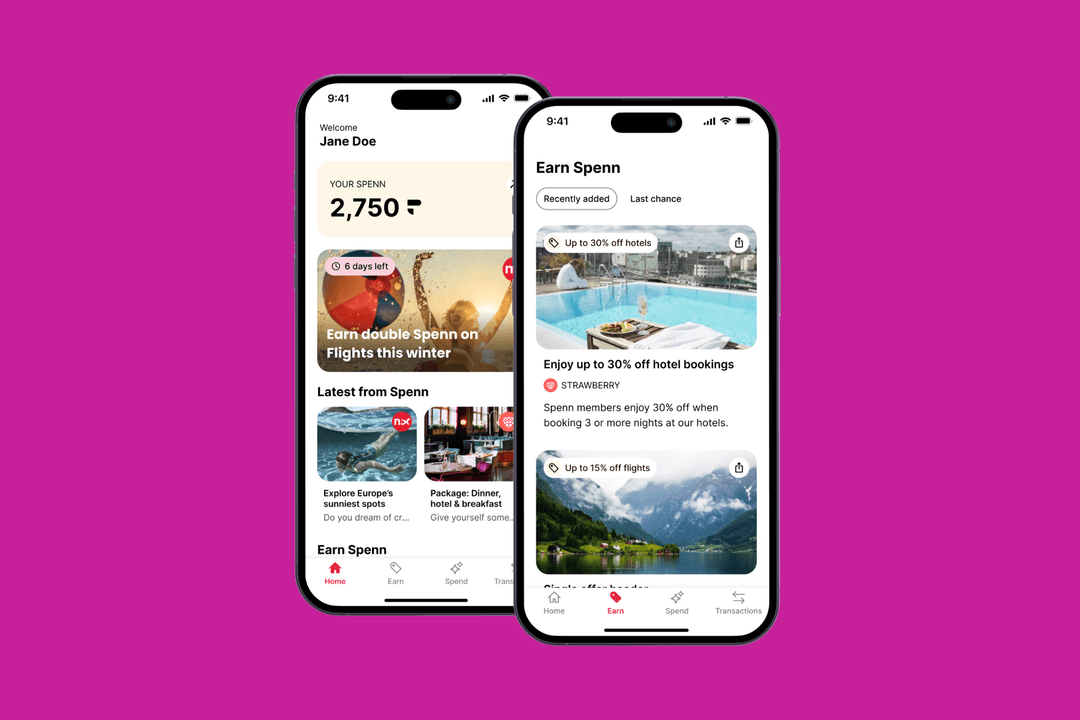The Digital Transformation of Patient Care in a Post COVID World
by Apadmi|Thu Jun 24 2021
Digital health saw huge leaps in 2020...
Digital and digitisation across many sectors have witnessed huge surges of uptake since the pandemic swept across the globe in early 2020. Healthcare, in particular, has undergone one of the most dramatic transformations, given the need to identify and treat COVID-19 patients whilst maintaining some sort of domestic healthcare systems in place. The sector’s growth rate is forecast at 26.30% between 2018 and 2025 according to Market Research Future. The analyst group (MRFR) also anticipates the market to touch $328.8 million by 2025.
Experts say that the COVID-19 pandemic has accelerated the adoption of digital health and virtual care by at least three years. This trend combined with a soaring awareness level around the importance of fitness for both mental and physical well-being is inspiring non-digitally native companies to rapidly develop the ability to care for patients through digital means, driving up the value of companies providing these services.
In short:
The pandemic has facilitated the adoption of digital health technologies at a rapid pace
For healthcare professionals, governments and patients alike, 2021 will be a year of HOW to use these technologies for everyone’s benefit ensuring vulnerable demographics like the elderly, those without internet access, and the young are not left behind
Health professionals must now ensure that technologies in practice don’t remove the vital human contact that provides the ‘care’ element of healthcare
Digital Healthcare Grows at a Rapid Pace
The health industry has fast-forwarded in areas like telehealth, remote monitoring, and artificial intelligence, accelerating disruptive change that will significantly impact the technology market.
This year, the health industry predicts that communication and collaboration tools will explode in 2021. The considerable increase in digital outpatient appointments, combined with the rising uptake of smartphones, tablets and iPads have also led to extensive market growth.
In the UK alone, there are two million online consultation requests a month and over 90% of practices are enabled with online-consultations. Video consultations will become commonplace as 99% of practices plan to implement the practice in 2021. (NHS 2020)
Healthcare consumers expect on-demand healthcare — much like on-demand entertainment
Like many industries post-COVID, the way individuals experience healthcare is evolving. With the rise of mobile access to digital experiences, the healthcare journey is now very much in the patient’s hands. Connected devices and digitised data are changing how we interact with healthcare professionals, and how decisions are made about our treatment plans and health outcomes.
Healthcare organizations will be pushed to leverage technology to support patients as they go about their daily lives, as they expect their experiences to be personalized and tailored to their preferences and prior interactions.
According to DMN3, patient consumers are going online to obtain medical information for the following reasons:
47% research doctors
38% research hospital and medical facilities
77% book medical appointments
The Rise of the Health ‘Gig’ Economy
But on-demand healthcare is also driven by the growth of the ‘gig’ economy, in which freelance professionals in various industries hire themselves out per job or ‘gig,’ instead of tethering themselves to one company.
Companies such as Nomad Health — an online marketplace that links doctors directly with medical facilities for short-term work — are making it easier for physicians to provide on-demand healthcare to clients in specific circumstances that match their talents, expertise, and schedule. In other words, doctors themselves become on-demand healthcare providers to better meet the changing needs of their patients, another benefit of digital transformation in the healthcare industry.
Digital Facilitates A More Continued Approach to Healthcare
AI-enabled and smart mobile and medical devices, blockchain electronic health records, machine learning, and orchestrated omnichannel communication tools allow this sort of tailored approach to healthcare to be delivered at scale for a reasonable cost
Innovation is the name of the game here, with the main goal of streamlining physicians’ work, optimizing systems, improving patient outcomes, reducing human error, and lowering costs through amazing web and mobile experiences.
In short, innovation is driving health management to transition from a largely reactive, transactional experience to a more proactive approach.
Key Considerations for Investors, Innovators and Patients Alike
Check out the service providers that you come across — in the tele and virtual patient care, there are a plethora of new entrants coming to market.
Understand deeply whether the service is based on rigorous, evidence-based standards for measuring patient outcomes.
Networks facilitating access to patients and to qualified medical professionals will need to showcase clearly how they vet their network so that when patients need that human connection they can trust them.
Virtual healthcare only provides so much support in the patient journey. There is still huge value for many especially in more complex health issues like mental health where the value of the human connection is paramount.
Clinical success depends on real people delivering care and it’s only through understanding the needs of both the caregivers and the patients receiving care through these new avenues, that we will be able to understand where technology can facilitate and augment the experience, and where patients need direct caregiver access.
NHS Blood and Transplant Donor App
Apadmi has been working with the NHS Blood and Transplant unit for seven years.
Back in 2014, NHS England issued a Five Year Forward View , this set out their vision, and stated that the “NHS needs to adapt to take advantage of the opportunities that science and technology offer patients, carers and those who serve them”.
It listed a number of changes that would happen “We will back diverse solutions and local leadership, in place of the distraction of further national structural reorganisation. We will invest in new options for our workforce, and raise our game on health technology – radically improving patients’ experience of interacting with the NHS.
We will improve the NHS’ ability to undertake research and apply innovation – including by developing new ‘test bed’ sites for worldwide innovators, and new ‘green field’ sites where completely new NHS services will be designed from scratch.”
At this time, NHSBT embarked on a transformation program focusing one Organ Donation and Transplantation (ODT) with Apadmi. “It needed to modernize a significant percentage of its core systems, platforms, and architecture along with re-aligning the infrastructure to more modern cloud-based technologies”.
DonorPath was the main result of the initial transformation program and was designed to help Specialist Nurses for Organ Donation (SNODs) streamline their processes to free up their time and make data capture easier.
We effectively replaced a paper based process for the capture of Donor data with digital. At the time they were collecting ~600 data points for each potential donor, writing this on to paper forms, and then entering this data from the forms into a computer. The process was time consuming and risky (errors), and resulted in the SNOD spending time form filling, rather than spending time with the Donor’s Family.
DonorPath is an app on the SNOD’s iPad that allows them to enter patient data directly at the point it becomes available. It allows multiple nurses to work on the same Donor at one time. See further benefits at the end.
Donor Referral Assessment
In 2018 we implemented the 1st key uplift called DRA (donor referral assessment). This uses data collected and analysed by NHSBT to speed up referrals. The DRA module provides decision making support for Specialist Nurses – Organ Donation (SN-ODs) at the time of a potential organ donor referral and ensures consistency of referral management, regardless of where in the UK a referral is made from. Use of the new module will ensure that referring hospitals receive the fastest possible response; preventing unnecessary delays to them in the provision of end-of-life care. The module will also provide valuable data about the referral process, which is vital to the work we are undertaking within ODT to shorten the length of the organ donation process.
Potential Donar Audit Released 2020
In 2020 we implemented a 2nd new feature called Potential Donor Audit (PDA). More information on what it is and its benefits can be found here Effectively, new features were built in to DonorPath to allow the Specialist Nurses to audit every death that occurs in every intensive care unit throughout the UK. Prior to PDA, the PDA process was paper based which meant time constraints and huge inefficiencies.
“Even though organ donation, for a lot of people, might be a very scary thing to have to contemplate at a very, very difficult time, those specialist nurses are there to help make that process easier for you.” Eleanor Ives: Wife of donor patient David Ives
To summarise
Needless to say, 2021 has still been a challenging year — not only for those trying to provide much-needed support and solutions to patients in difficult, virtual and domestic circumstances but also for those receiving it.
If digital can help anyone’s professional or personal lives become better, quicker, it will have succeeded where many other avenues have not. Here’s to a more positive and more importantly, healthy second half of 2021.
If your healthcare business is looking for strategic ways to reach and interact with patients more efficiently and effectively then please reach out to one of our sales managers via sales@apadmi.com.
Share

